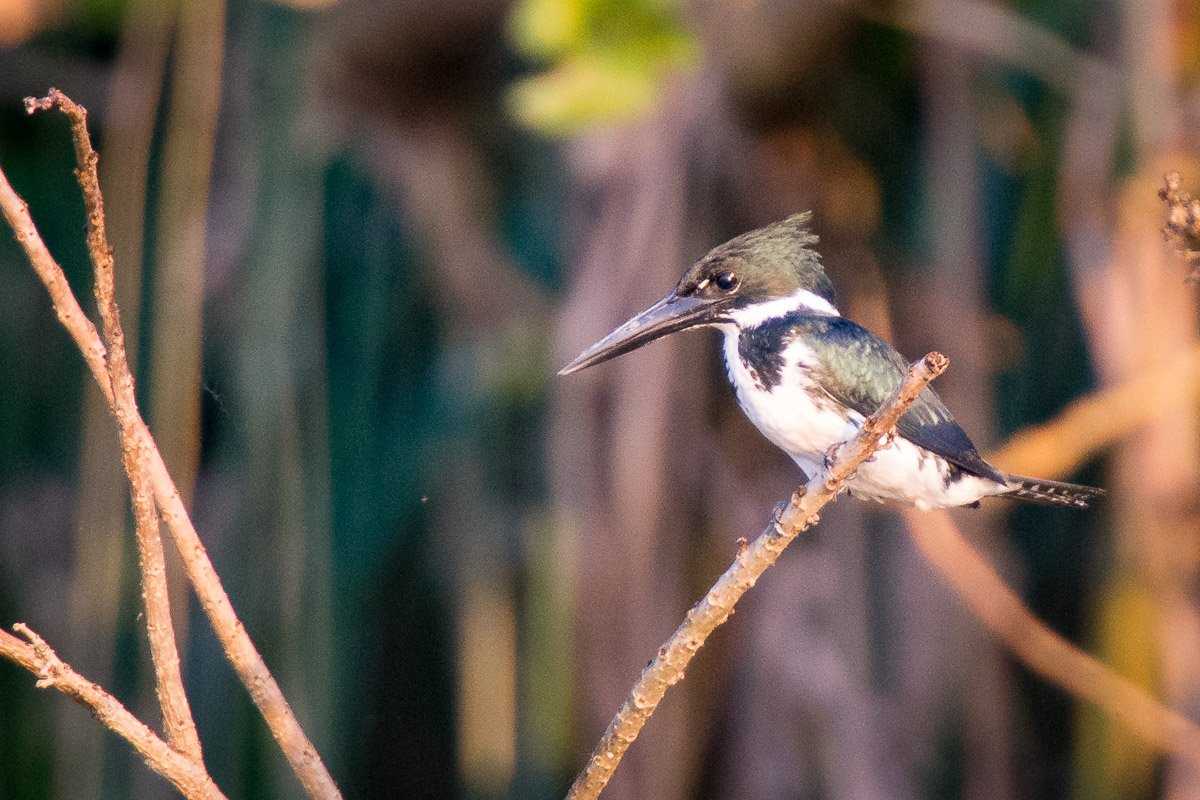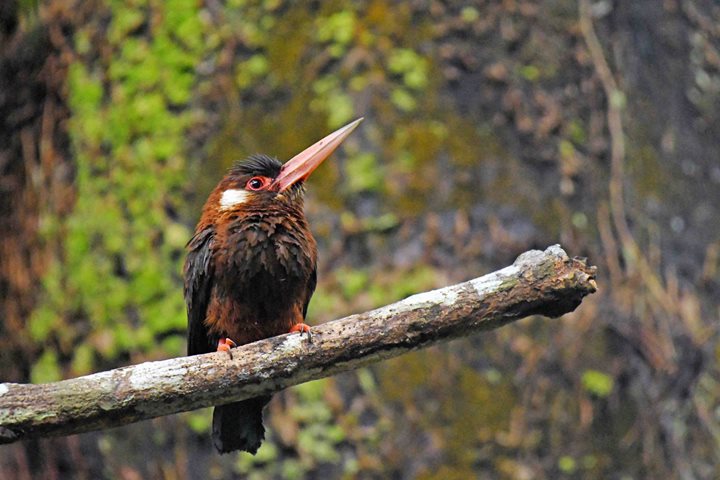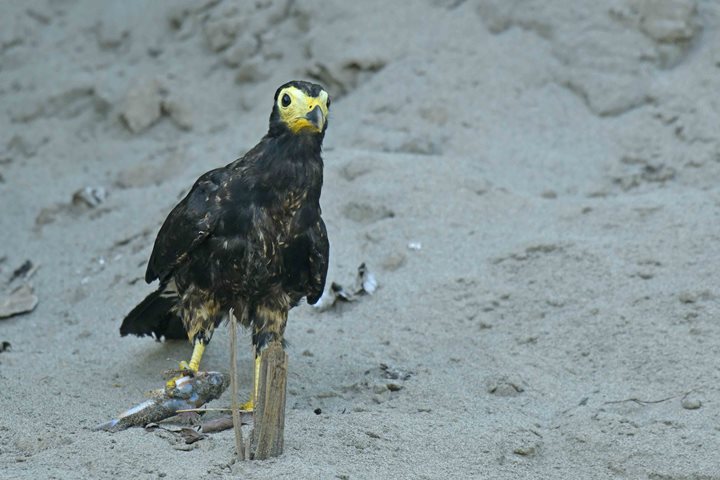It was still dark when our naturalist knocked on our doors. It was time to get up and load the skiff for our pre-breakfast skiff exploration. It was a fresh morning and the sky was covered with clouds.
We geared up and loaded the skiff. Rain drops began to fall over us as we explored the shores of the Ucayali River. The plan was to continue no matter what. We wanted to experience the rain in the Upper Amazon so we covered ourselves with ponchos. Little by little the rain began to stop and even though the sun didn’t showed up by then, the lush forest began to reveal itself to us.
Up in the canopy we began to see a lot of movements. A very distinctive sound came from above. Macaws!! Our morning quest had been fulfilled. Red bellied macaws were enjoying the rainfall and they had gathered in a single tree. It was a big flock of macaws. We wanted to spend more time contemplating them but we needed to return for breakfast.
Right after recharging our energies, our naturalist took us to a trail in a varcea forest. We learned a lot about how the trees have adapted to remain under water for several months. Many trees had aerial roots and others had buttress roots. One way or another the trees were competing, trying to get to the sunlight first. The diversity in this place known as Llanalpa was spectacular. We all enjoyed the hike.
Back on board, we gathered in the lounge to learn how to prepare a famous Peruvian dish, “Juanes.” This consists of rice, boiled eggs, and a piece of chicken with black olives. All together, they are put in a bijao leaf very tightly. It’s like a tamale but instead of corn, you use rice. Very delicious.
Our navigation continued along the Ucayali River. Our next destination was another tributary of the Amazon, Dorado River. We were very impressed in how our officers navigated in this river. Local small boats called “peque peques,” would wave to us. In the meantime, our naturalist Luis Vela gave us an interesting presentation about the people of the Amazon.
As soon we arrive to the mouth of Dorado River, we geared up. In this opportunity we added a new piece of equipment, a big spotlight. This river is known for the amount of caimans that live along it. What an experience!
Many species of birds and raptors were spotted. Slate colored hawks, black collard hawks, great black hawks, and many others delighted our view. As the sun began to set, we turned on the spotlight and the reds were seen along the river bank and also on the surface of the river. Spectacle caimans were identified by our naturalist. Baby caimans to mature ones were seen and we were able to take several pictures of them.
It was an awesome way to finish our fourth day exploring the Pacaya and Samiria Reserve.









